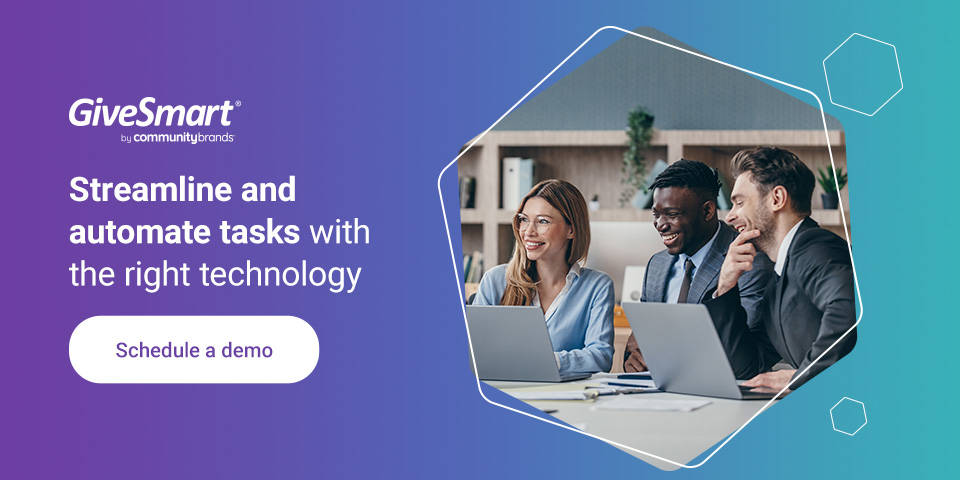Jul 23, 2024
Nonprofit Burnout and How to Avoid It

Burnout is a familiar concept in many industries, but the nonprofit sector must contend with burnout in a uniquely challenging landscape. The emotional demands of the work and a lack of resources can make burnout especially prevalent for these organizations trying to make a difference. Burnout itself can hurt productivity and well-being and cause workers to leave, further increasing the workload on the remaining team members. As the nonprofit scrambles to address staffing needs, the real goals fall to the side.
To keep burnout at bay, nonprofit administrators must understand its impact and what can cause it in these organizations.
Why burnout matters
According to the State of Nonprofits 2024 report from the Center for Effective Philanthropy (CEP), 95% of nonprofit leaders see burnout as a concern in their organization — and many are seeing its effects. Roughly 75% of surveyed leaders said staff burnout is impacting their organization's ability to achieve its mission in some way.
Here's how burnout affects employees on an individual level:
- Exhaustion: Emotional and/or physical fatigue can cause workers to develop a cynical or even resentful attitude toward their organization, making full participation in daily tasks difficult.
- Alienation: As stress builds, staff members become increasingly likely to disengage from their work and distance themselves from their co-workers.
- Performance drops: Burned-out employees often struggle to focus on their everyday responsibilities, lose the ability to think creatively, and feel increasingly demotivated to get work done — and the whole organization suffers as a result.
What causes burnout in nonprofits?
While burnout can come from many different places, it often occurs in nonprofits due to:
- Emotionally demanding work: Many people start working in nonprofits because of their passion for the cause and desire to make a difference. Nevertheless, the day-to-day demands of the job can be emotionally taxing, especially if progress is slow.
- Challenging workloads: For-profit companies readily invest in resources that help team members work more efficiently and focus on high-priority jobs. Nonprofits with limited resources might not implement these tools as quickly. However, tools that can streamline workloads — such as nonprofit software solutions — help improve productivity, allowing workers to focus on more meaningful work and feel more accomplished with their careers.
- Physical stressors: Nonprofit work usually isn't physically demanding, but lifestyle factors like an unbalanced diet or a lack of exercise can contribute to burnout. For nonprofit leaders, poor sleep is the leading stress factor by far. Sleep is especially important because it affects so many other areas of one's life, like health problems and mood. Plus, good sleep contributes to the cognitive capacity needed to tackle issues within your control.
- Employees feeling underappreciated or undervalued: Limited resources can also contribute to burnout by preventing nonprofits from showing their appreciation for employees. For example, an organization may not be able to offer comprehensive benefits to employees, like high compensation or time off. A lack of career growth opportunities may also contribute to burnout symptoms.
Some of these causes are easier to address than others, but they can all cause employees to pause and wonder what they're working toward.
Burnout and high turnover rates
One of the most challenging aspects of nonprofit burnout is often its impact on turnover. In a 2023 study by the National Council of Nonprofits, nearly three out of four respondents said their nonprofit had job vacancies — and most of these positions were public-facing roles such as direct service workers.
Burnout sometimes spurs a vicious cycle that starts with a burned-out employee leaving, which may lead to a few different situations:
- The employee's workload gets redistributed to the remaining team members, increasing their workloads and stress.
- If the employee was a senior member of the team, they might take institutional knowledge with them, causing the organization to spend time relearning information and processes.
- Morale can drop, and other employees may question whether they should stay in their roles.
- The nonprofit must dedicate resources to replacing the employee. Employers commonly estimate hiring costs to be three to four times higher than the salary for the role.

These events can cause a domino effect of nonprofit employees getting burned out, leaving, and prompting others to do the same. With enough turnover, organizations struggle to keep up, potentially resulting in a decline in overall performance and the organization's reputation.
By taking steps to prevent burnout, you also minimize the likelihood of this cascade of negative effects and give your team space to focus on the mission.
How can nonprofit organizations tackle employee burnout?
We know that burnout has adverse effects on organizations, but how can you avoid it without extensive resources? Try the following tactics to prevent burnout in a nonprofit:
1. Prioritize self-care and positive well-being
This strategy might sound straightforward, but it can make a significant difference. Many workplaces emphasize a “hustle culture” that only rewards constant productivity and discourages rest — but that rest is crucial for achieving and sustaining high-quality work.
Researchers at McKinsey have evaluated correlations between stress levels and work performance. They found that some stress helped nonprofit leaders achieve peak performance, but too much stress had the opposite effect — and after spending time in high-stress “zones," they needed time to decompress in lower-stress zones. The researchers also demonstrated the impact of self-care. Leaders who participated in self-care improved work effectiveness by 21% and well-being by 45%. Taking time for themselves allowed them to be more effective leaders and support the organization.
To promote self-care and well-being among employees, leaders must build these qualities into the workplace. You might teach employees about the risks of burnout or adjust expectations for working hours to ensure work-life balance. Modeling healthy behaviors and speaking transparently about self-care can help teams prioritize their rest. Some people might find it indulgent or selfish to take time for themselves, so focus on framing self-care as a necessity for helping others.
2. Implement the right resources and balance workloads
If demanding workloads are contributing to burnout on your team, focus on ways to manage the issue with minimal hiring. Software and automation solutions can eliminate many manual tasks, like reporting, auctioning, and outreach, allowing employees to focus on the meaningful work they joined you for.
Another way to address high workloads is to build delegation and communication skills. Supervisors, volunteer managers, and other leaders can benefit from maintaining a high-level overview of their tasks. Doing so allows them to avoid getting bogged down in the details and feeling overworked by enabling them to delegate tasks to other team members. Consider how other strategies like boosting volunteer recruitment or working with contractors can help spread out the workload as well.
3. Invest in employee happiness and development
While the nonprofit industry isn't known for high compensation and perks, fair benefits can play a crucial role in employee retention and the organization's overall success. Focus on which benefits would be most valuable to your employees, and consider the following elements:
- Employment benefits like retirement plans or vacation days
- Long-term career opportunities, such as professional development events
- Perks focused on self-care, like wellness incentives or gym memberships
Depending on the size of your organization, you might consider creating a dedicated HR department. You can also support employee happiness by celebrating wins — no matter how small. This practice helps maintain morale and reminds workers why their work and individual contributions matter. It also demonstrates the results of all their hard work, ideally offering some motivation.
Streamline and automate tasks with the right technology
Digital processes, like online donations and data analysis, have become a core component of nonprofit activities, making software a valuable resource for fighting burnout. Even the best work culture can't keep up with the stress of an excessive workload. GiveSmart is a powerful all-in-one platform with a wide range of tools to streamline and automate tasks like those used in event management, auction bidding, campaign management, and fundraising through online, virtual, hybrid, and peer-to-peer channels.
Schedule a demo online or call 800-667-8075 to learn more and see how GiveSmart can help.
Related




